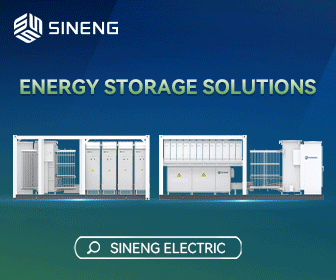Energy Storage
What we need and why we need it
 Why do we need energy storage? It is a question many of us may not have considered until recently. The brief answer is the world needs more energy, and we need that energy to be clean. The world is changing rapidly and if the energy landscape doesn't change with it, there will be negative consequences. With advances in technology, growing population, and developing infrastructure in both developed and developing countries, there is a real need for energy storage.
Why do we need energy storage? It is a question many of us may not have considered until recently. The brief answer is the world needs more energy, and we need that energy to be clean. The world is changing rapidly and if the energy landscape doesn't change with it, there will be negative consequences. With advances in technology, growing population, and developing infrastructure in both developed and developing countries, there is a real need for energy storage.
Energy storage will play a key role in the growing demand for energy, as it not only provides energy when it is needed, it also stabilizes the energy supply. Energy storage offers firming capabilities for unpredictable renewables, which is necessary for providing wind and solar energy in an uninterrupted state to the end-user when it is required.
Energy storage applications are very relevant to remote communities, which are off the grid but still require reliable power. While there has been an increase in the installation of solar panels for power generation, this energy is inefficient without energy storage. Energy storage can be applied to remote microgrids, which will benefit these communities, as well. With remote microgrids, energy is generated off-site and, as a result, there is an inadequate supply of energy. One way to solve that problem is by storing energy when there is an abundant supply from solar and wind sources and using the stored energy when there is a shortage.
But large cities require energy storage, too. The energy landscape has been developing with new technology at a rapid pace and the electricity grid needs to catch up. The integration of renewables into the grid places stress on grid infrastructure, which energy storage can alleviate by helping the grid to stabilize. Energy storage increases efficiency for the grid and reduces peak electricity demands. With peak electricity demands in mind, energy storage allows for energy arbitrage, which enables users to store energy when it is less expensive and use it during peak periods; thereby reducing the bill to the end user.
As electrical infrastructure develops worldwide to meet the needs of growing populations and increased energy demand, it becomes clear that energy storage is necessary as we continue to transition to a greater use of renewable energy sources.
Advances in technology continually change the way we use energy. It also raises our demand for it. In the coming decades electric vehicles will become mainstream. Energy storage will be key in ensuring the heightened demand for clean energy vehicles is met with seamless integration with the energy infrastructure, thereby safeguarding against a heavy strain on the grid.
Energy storage is also required for telecom backup power. People are increasingly turning away from the use of landlines and are opting to use their cell phones exclusively. A battery offering long duration backup power in the case of natural disasters is vitally important. During emergency situations such as hurricanes, phone lines can be down for several days. With reliable, long duration energy storage, telecom facilities can remain up and running, which will aid rescue services and facilitate communication.
While there is a clear need for energy storage to help balance the grid and improve the grid's efficiency, there is another factor that is greatly influencing the need for energy storage. That factor is climate change. Our longstanding reliance on harmful fossil fuels has been detrimental to the environment. As a result of climate change, air and water quality has been affected, causing health issues for many. Further impact can be seen in the loss of habitat for animals and plant life, as they struggle to adapt to a changing environment. Because of climate change, we are experiencing the loss of an environment we have come to depend on for generations.
As climate change has become a critical issue, there is an immediate need for clean energy to replace the use of diesel and other energy sources which release greenhouse gases. Energy storage harnessing clean power from solar and wind sources can certainly help achieve this goal; but the ideal energy storage battery will be a clean energy storage battery, one that does not integrate harmful chemicals into its system and does not release harmful gases into the environment. This ideal storage battery will need to have a high efficiency rating, the capacity to recharge many times, and be very cost-effective. A long duration battery that possesses these characteristics is what the world needs right now.
Environmentally sustainable energy storage will be regarded as the next stage in the evolution of energy. There is an undeniable need for energy storage that is safe, reliable, and clean. As energy storage developers strive to meet the goal of bringing the ideal energy storage battery to commercialization, it is evident the will and determination is there, despite the challenges. There is no doubt we will soon see this ideal energy storage system on the market, as the need to support both sustainability and efficiency must be met.

Alysha D. Singh is the marketing communications manager for ZincNyx Energy Solutions, Inc.
ZincNyx Energy Solutions, Inc. | www.zincnyx.com | @ZincNyx
Volume: 2016 July/August









